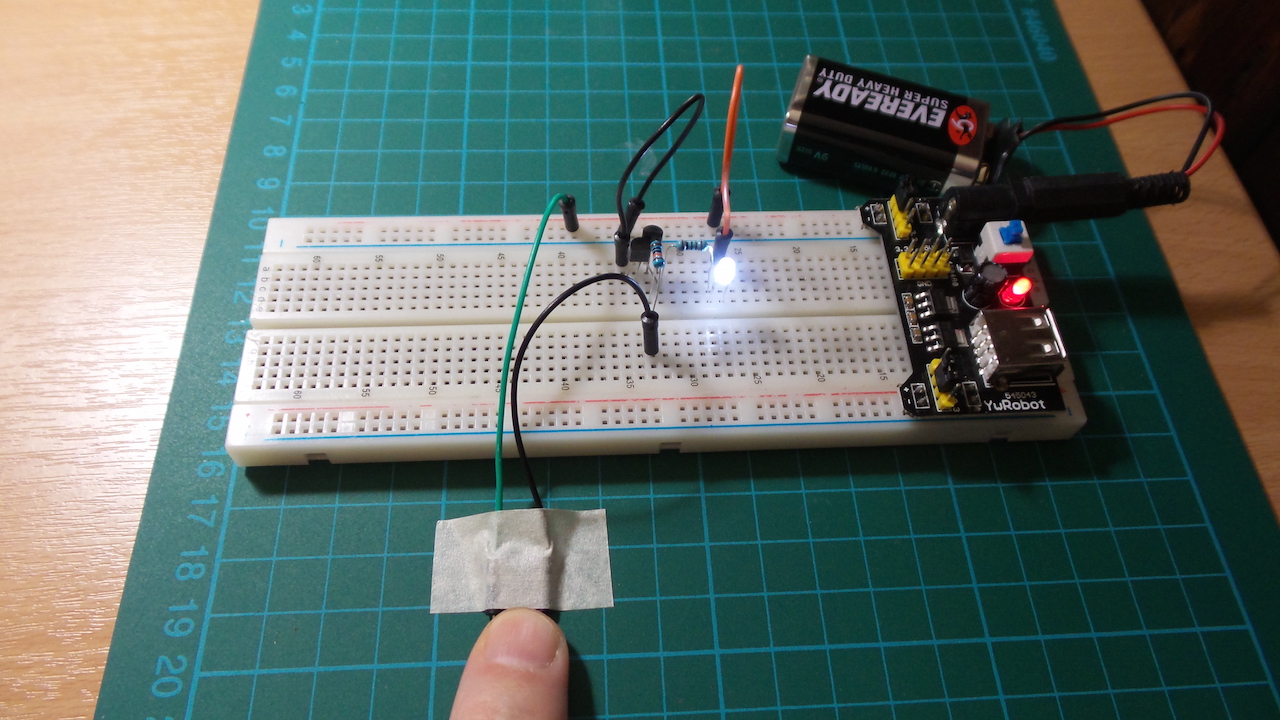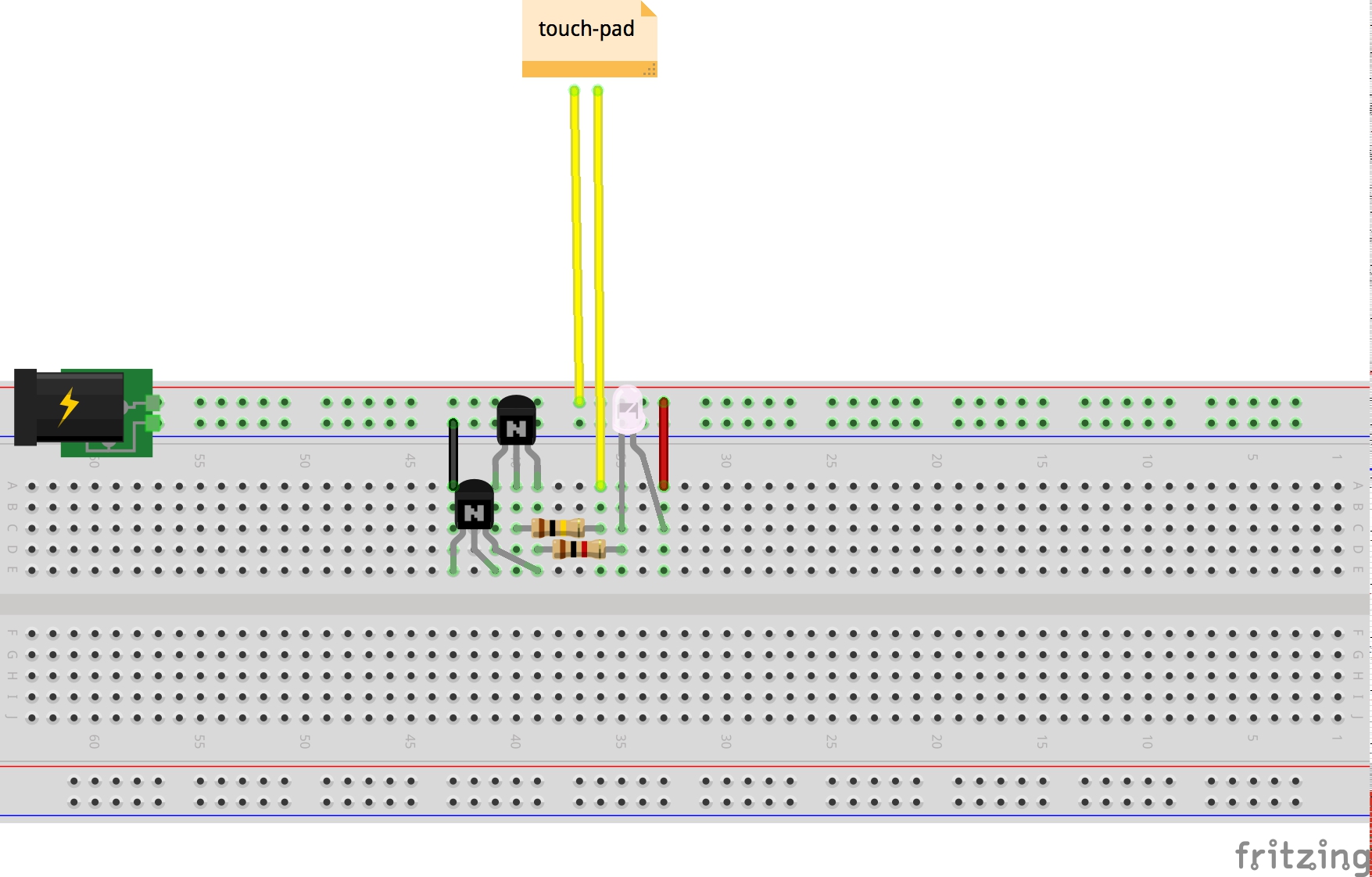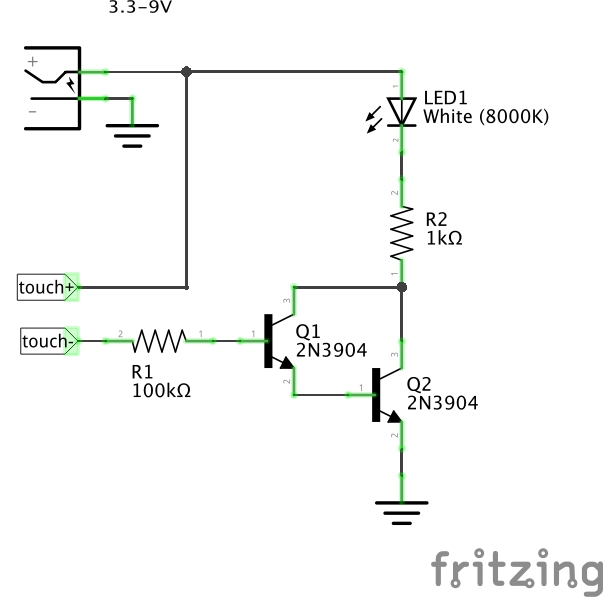#130 Darlington Touch Switch
Test a Darlington-pair touch switch.

Notes
A Darlington pair refers to a couple of bipolar transistors connected so that the amplified emitter signal of one is used to drive the second. This results a multiplication of the gain, so the circuit is hyper-sensitive to any input signal.
An ideal applications is a touch switch - the classic demonstration case.
The load in this circuit is just an LED with a current-limiting resistor. Two NPN transistors form the Darlington-pair. The circuit works over a wide-range of voltages - basically constrained by the specific transistors used and the size of the current-limiting resistor (to avoid blowing the LED).
The touch switch control comprises two leads:
- to the base of the Darlington-pair
- to positive power
A 100kΩ resistor is included to protect against bad things happening if the touch switch is completely shorted.
It doesn’t take much to activate the switch:
- touch the base lead only will turn on the Darlington-pair to a degree
- a single finger pressing across the base and power lead will turn the switch hard on
- touch one lead with one hand, and the other lead with the other hand (using your body as the conductor) will also turn the switch hard on
Construction


Credits and References
- Darlington transistor/pair - wikipedia
- The Darlington pair - describes the touch switch circuit
- Touch switch with a darlington pair - video demo
- Darlington Transistors - electronics-tutorials
- Touch Switch Circuits - huge collection of touch circuits
